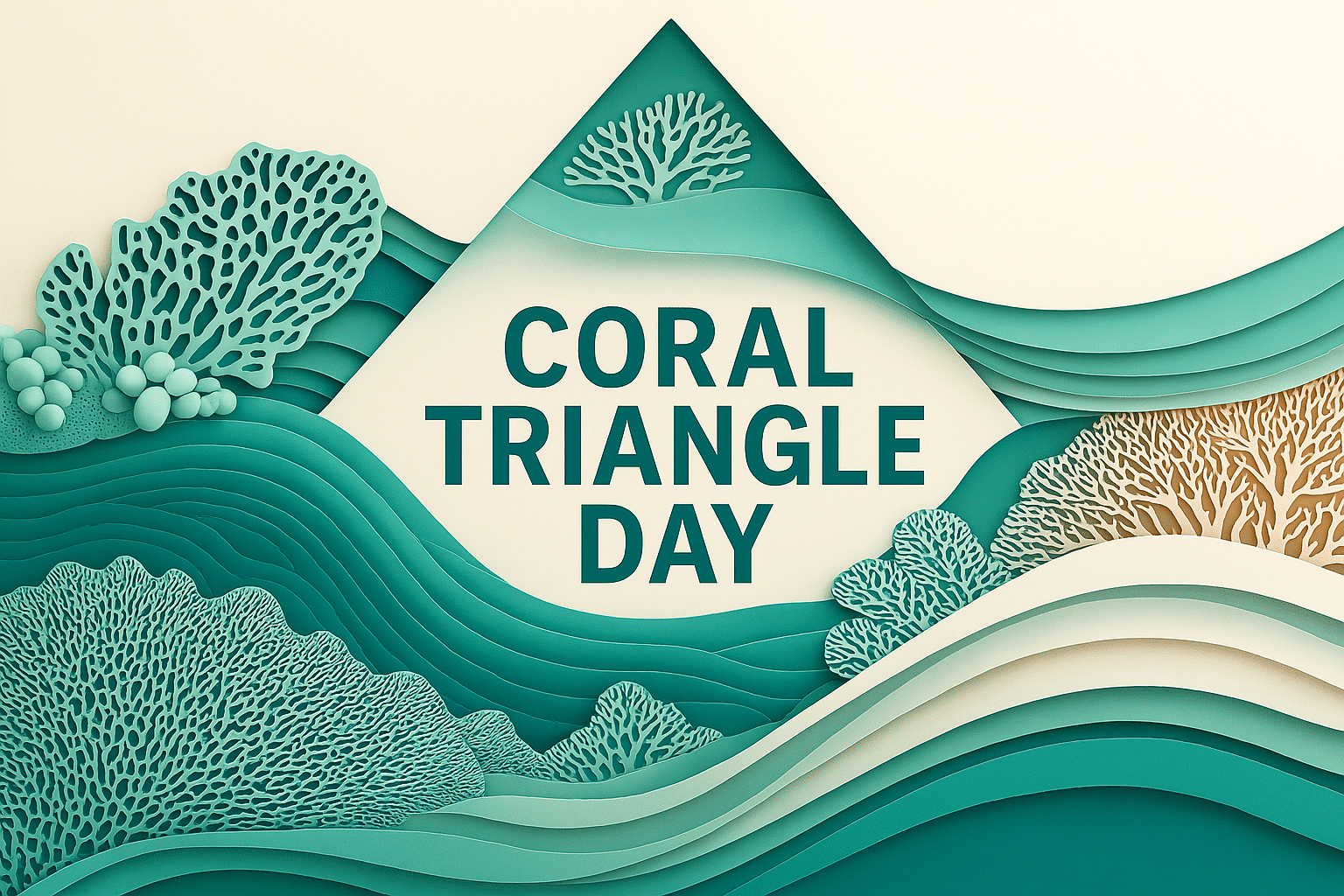What is Coral Triangle Day?
Coral Triangle Day is held every year on June 9 in countries across Southeast Asia and the Pacific. It celebrates the Coral Triangle region, a vast marine area that includes the waters of Indonesia, Malaysia, the Philippines, Papua New Guinea, the Solomon Islands, and Timor-Leste. This region is known as the global center of marine biodiversity.
The day focuses on the need to protect coral reefs and coastal ecosystems. With over 120 million people depending on the Coral Triangle for food, jobs, and protection from storms, the health of this region matters globally. Coral Triangle Day brings attention to these fragile environments and the people working to protect them.
History and Origin
Coral Triangle Day was first held in 2012. It was launched by the Coral Triangle Initiative on Coral Reefs, Fisheries and Food Security (CTI-CFF), an effort by six nations to promote sustainable management of marine resources. The date, June 9, was chosen to follow World Oceans Day on June 8, creating a two-day moment of focus on ocean health.
The day was created to raise public awareness of the Coral Triangle’s incredible biodiversity, as well as the threats it faces. Events are held throughout the region to inspire action and build support for long-term conservation. Since its founding, Coral Triangle Day has grown into a major environmental awareness event in the region.
Who participates in Coral Triangle Day?
- Local communities: Organize beach cleanups, community talks, and reef protection efforts.
- Environmental groups: Lead awareness campaigns, run educational programs, and launch conservation initiatives.
- Governments: Support national marine policies and fund coastal protection projects.
- Schools and universities: Host workshops, student exhibitions, and youth-led campaigns about coral ecosystems.
- Tourism and fishing industries: Promote responsible practices and sponsor reef-safe programs.
Slogans and Themes
Themes often revolve around unity and shared responsibility. Popular slogans include “Shared Waters, Shared Solutions” and “Protect Our Reefs, Protect Our Future.” The focus is on community involvement, conservation partnerships, and the idea that healthy oceans support healthy lives. Campaigns stress the role of education and daily choices in protecting marine ecosystems.
Colors, Symbols and Patterns
Colors:
- Blue: Represents the ocean and the need for its protection.
- Green: Reflects marine biodiversity and the urgency of conservation.
- White: Stands for clarity, fragility, and the interconnectedness of coastal life.
Symbols:
- Coral reefs: Stand for the heart of the Coral Triangle and its ecological value.
- Sea turtles and fish: Represent the region’s unique wildlife and its dependence on clean habitats.
- Waves: Suggest the power and rhythm of the ocean, and its need for balance.
Patterns:
- Coral designs: Used in decorations, posters, and educational materials to celebrate reef life.
- Ripple patterns: Reflect movement and how actions spread through communities and ecosystems.
- Marine scale textures: Often used in visual campaigns to symbolize variety and biodiversity.
Most Used Hashtags
- #CoralTriangleDay
- #OceanConservation
- #SaveOurReefs
- #ProtectMarineLife
- #SharedWaters
How do you celebrate Coral Triangle Day?
- Join a cleanup: Participate in beach or underwater cleanups to reduce marine pollution.
- Attend a workshop: Learn about reef health, marine species, or conservation science.
- Eat sustainable seafood: Choose seafood from sources that support reef-friendly fishing.
- Share online: Post facts, images, or actions using the Coral Triangle Day hashtags.
- Volunteer locally: Help a marine conservation group with events or outreach efforts.
Why is Coral Triangle Day important?
Coral Triangle Day draws attention to one of the most diverse marine areas on the planet. This region is home to over 600 species of reef-building corals and thousands of species of fish, yet it is under constant pressure. Overfishing, pollution, and climate change are putting reefs at risk.
The day gives local communities and international groups a platform to come together. It encourages long-term solutions that respect both people and nature. Coral Triangle Day is a reminder that what happens below the surface affects us all, and protecting the ocean means protecting the future.
Features
June 9: Coral Triangle Day
Why do you keep falling for the same type?
Read the article Lovemaps: the hidden blueprint of our love.

